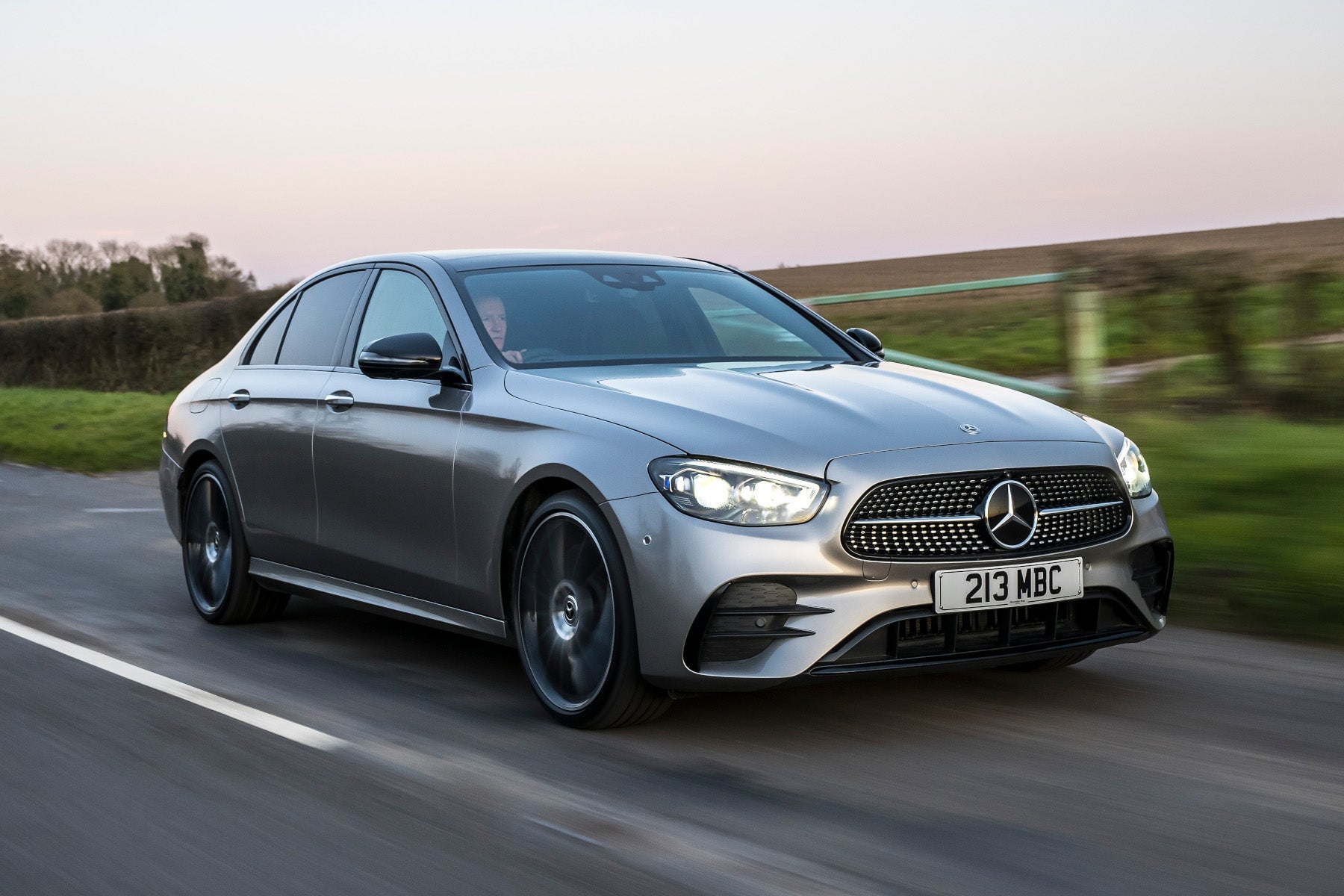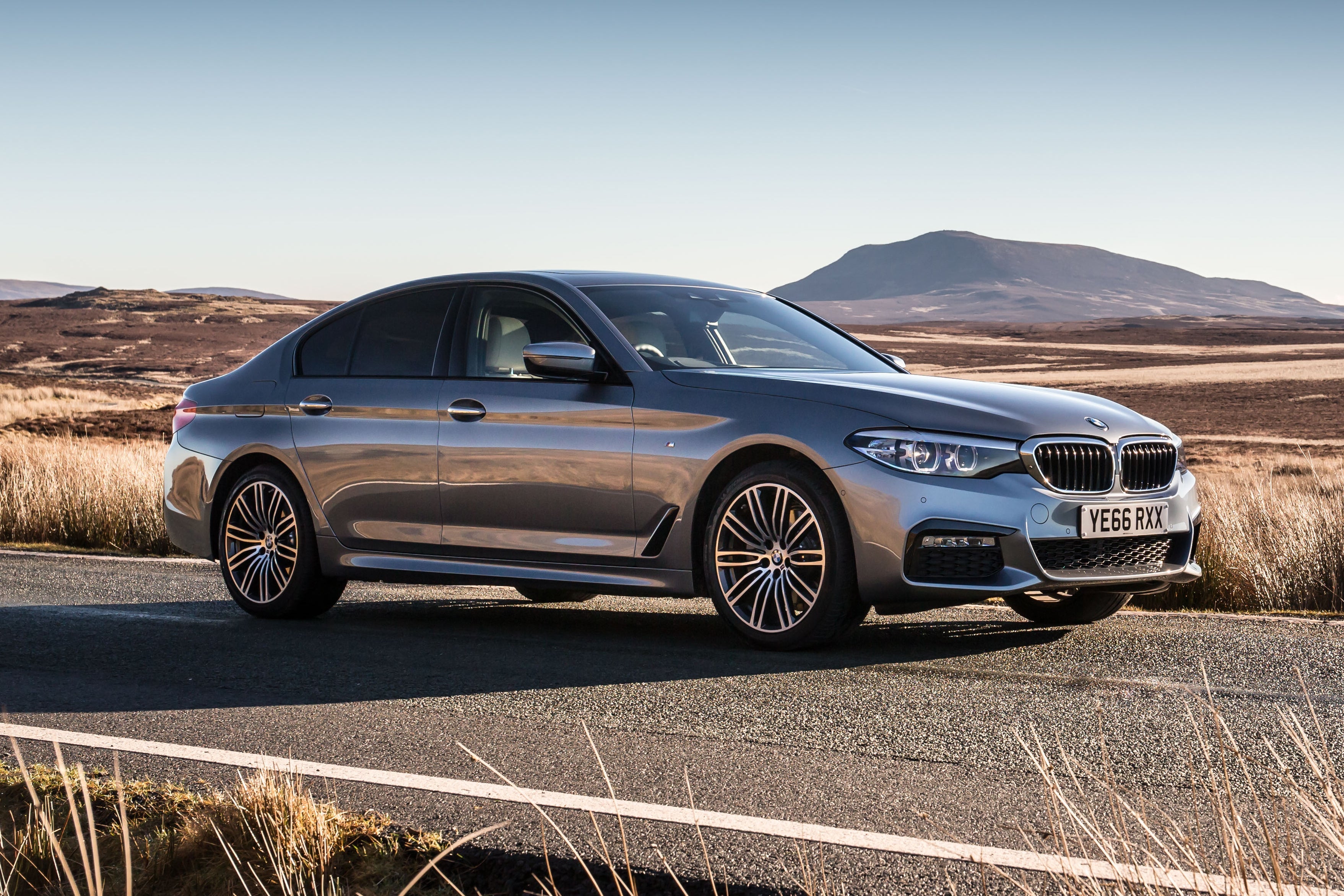Lexus ES Review 2023
Written by Andrew Brady
Quick overview
Pros
- Vast cabin space
- Excellent quality and improved tech
- Smooth and refined
Cons
- Lacklustre single engine option
- You can't fold down the rear seats
- Doesn't handle like a 5 Series
Overall verdict on the Lexus ES
"The Lexus ES is the direct replacement for the GS executive saloon. If you think that a mild change of name means any significant change in tack for the firm’s mid-size saloon, then as this review will show you'll be in for a disappointment."
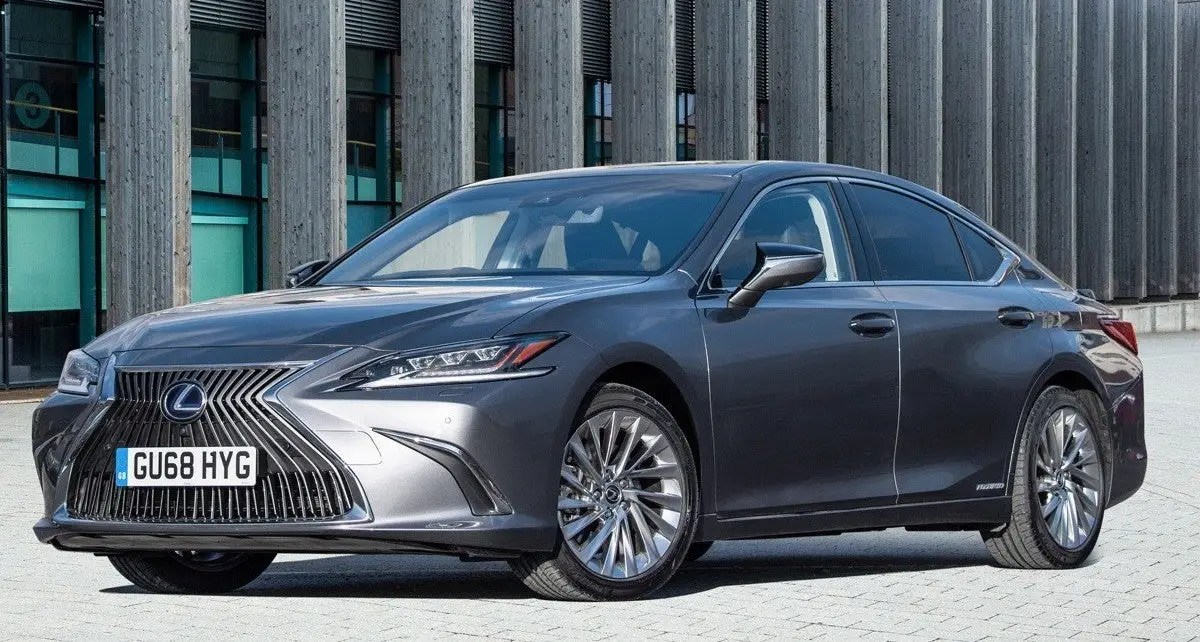
On the other hand, if you liked the Lexus GS, and there was plenty to admire about it, then the Lexus ES offers a lot more of the same. It is a sharper looking saloon than the GS, which slowly evolved to look rather anonymous. The ES has crisper lines and a slightly coupe-esque profile, though it’s certainly not in the mould of the Mercedes CLS.
The rivals for the Lexus ES are the usual suspects from the executive sector, namely the Audi A6, BMW 5 Series, Jaguar XF and Mercedes E-Class. All of these cars have the added ace up their wheelarches of an estate model for anyone wanting more carrying capacity. This is an area where Lexus has long lagged behind its European counterparts, and the ES remains resolutely only available as a four-door model with boot rather than tailgate.
On the inside, you won’t mind the Lexus ES isn’t an estate as the cabin offers up an impressive amount of room. This is certainly one area where Lexus has listened to critics of the GS and responded in very definite terms. In fact, you could almost accuse the firm of overreacting as the rear seat now serves up almost as much knee room as the LS luxury limousine in Lexus’ range. Still, we’ll take that over the cramped back seat of the GS that went before.
The front of the ES’s cabin is no less generous in the space it offers its occupants. The driver is presented with a very high-tech looking dash, which includes a couple of unusual column stalks poking out of the sides of the main binnacle. They are for the drive modes and traction control and, while they seem a little unusual at first, they are an example of Lexus daring to think differently and come up with a solution that works, even if it appears a little left-field.
For 2021, Lexus added a touchscreen for its infotainment system allowing you to ditch the extremely fiddly trackpad control method. It's still not the best system in its class, but it is at least easier to use on the move.
Left-field thinking also underpins why Lexus has resolutely stuck with hybrid power for its mid-size saloon models for many years now. The petrol-electric set-up for the ES is familiar, but it now drives the front wheels rather than the back pair. Again, this puts the Lexus at odds with conventional thinking for this class of car, but there’s no denying it has upsides such as the huge rear seat space now provided in the ES.
As far as driving goes, the Lexus ES is much the same as the GS in that it is smooth and unflustered in most conditions, but try to exploit its grip or power and its poise begins to unravel all too rapidly. A BMW 5 Series will simply drive away from the Lexus on a twisting road thanks to its superior body control and grip levels. The 2021-on models have had improvements to the overall handling, and it does feel a little more controlled, but it's still not exactly an engaging driving experience. However, on crusty surfaces, the Lexus gets right back on terms with the plushness of its ride.
It's a shame that Lexus doesn't offer more engine choices with the ES, as that would help it compete more closely with the Germans. However, its quality, comfort and refinement blended with the Lexus ES’s low running costs make it an interesting package. Not necessarily a class-leading one, but definitely worthy of consideration.
Looking for a used car for sale? We've got 100s of Lexus Approved Used Cars for Sale for you to choose from, including a wide range of Lexus ES cars for sale.
Is the Lexus ES right for you?
The executive sector is full of cars with sporting touches and muscular appeal in a bid to draw in buyers, yet comfort is a much longer lasting talent to have and this is what the Lexus ES offers. Its supple suspension soaks up lumpy roads and whisks them away with barely any disturbance to its occupants.
For this reason alone the ES is a great car for anyone who has long commutes to complete. It deposits you at journey’s end feeling comfy, relaxed and ready for what comes next.
This calm demeanour is enhanced by the hybrid powertrain’s easy-going nature, while the cabin has masses of space and build quality that makes a bank’s seem a little slapdash. The interior is also packed with lots of standard kit to make your life easier and more cosseted.
Lexus also gets it right when it comes to running costs, which will be of vital importance to the many company car drivers faced with the choice of picking from the Lexus or the multitude of other executive saloons available.
What’s the best Lexus ES model/engine to choose?
Guess what? You don’t get a choice when it comes to the engine in the Lexus ES as there’s only one and it’s a petrol-electric hybrid. The 2.5-litre four-cylinder petrol unit is spliced with an electric motor to produce a combined 218PS.
That’s not a lot when compared to the ES’s usual rivals with the choice of four, six and even eight-cylinder petrol and diesel engines. So it proves on the road and against the stopwatch, with the ES needing 8.9 seconds to cover the 0-62mph dash - fine when competing with base model rivals, but not once your move up their ranges.
Although the performance is far from thrilling, the ES’s engine combo rewards with smoothness and it pulls away from a standstill using just electric power for a very quiet, smooth start to your journey.
With just one powertrain, your big decision is which trim to choose. There are four to pick from, comprising the base ES, ES Premium Edition, F Sport and Takumi. The latter is the most luxurious, while the F Sport has a more dynamic outlook. Yet there’s nothing missing from the standard ES, so this is the one we’d head towards.
What other cars are similar to the Lexus ES?
Lined up against the wall as rivals for the Lexus ES are the usual suspects. They are the Audi A6, BMW 5 Series and Mercedes E-Class from Germany, while the British connection is taken care of by the Jaguar XF.
The BMW is the one keener drivers will gravitate towards, while the Mercedes appeals for its comfort and elegant cabin. The Audi A6 has a more avant-garde appeal, while the Jaguar is the Union Jack in automotive form with supremely comfortable ride.
Yet perhaps the closest rival in approach to the Lexus is the Volvo S90. The Swede is another that does things its own way and doesn’t give a damn what anybody else thinks. That’s rather attractive.
Comfort and design: Lexus ES interior
"In keeping with the Lexus ES’s comfort rather than sporting approach, the driving position is a little more upright than you’ll find in the likes of the BMW 5 Series or Jaguar XF. It gives superb support and the front seats are deeply cushioned to give an old-fashioned armchair feel, yet there is also sufficient side bolstering to keep you in place during cornering."
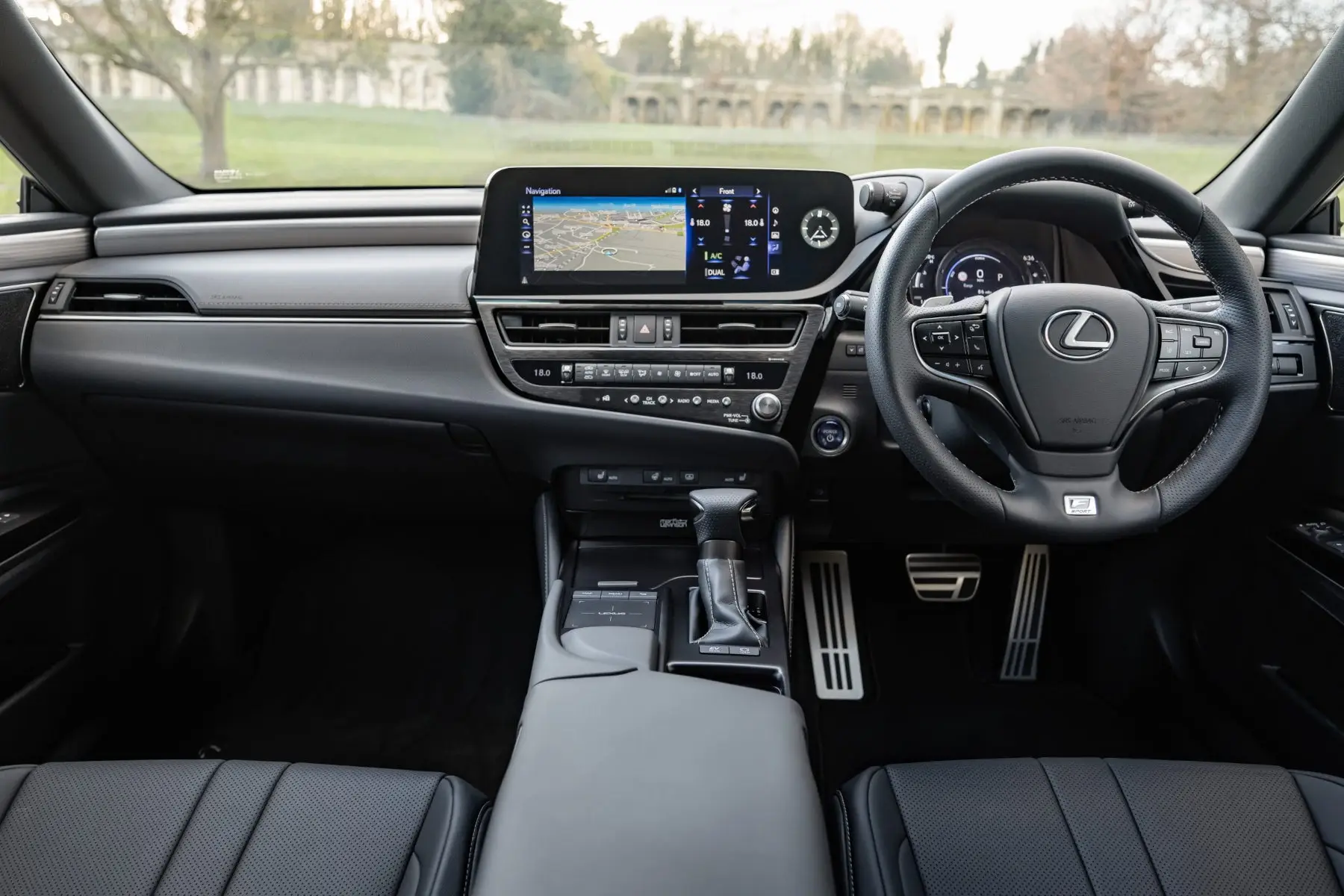
The F Sport model comes with more sculpted and heavily bolstered seats, in keeping with its more dynamic nature. These seats are no less comfortable than the standard items, but are still mounted fairly high off the floor relative to rivals.
In every ES, there is of space for the driver’s head and shoulders, as well as a huge range of electric seat adjustment for the shortest or tallest drivers. For anyone in between these two extremes, you will also find it easy to attain the right driving position as the steering wheel also moves for height and angle.
The view from the driver’s seat is good to the front and sides, but the sloping rear pillars restrict vision when changing lanes or pulling out of side streets at an angle.
Looking inside the cockpit, the digital dash display is clear and easy to read and the controls are clustered in a way that makes them easy to reach for. That includes the two unusual looking rotary control jutting out of the main binnacle that operate the traction control and driving modes. At first, they seemly strangely positioned, but you soon forget they are there unless you want to alter which mode the car is in when you have instant access.
For 2021 Lexus hasn't changed the granite-hewn quality or array of old-school buttons (we kind of like that), but it has brought in an improved infotainment system. The menu designs and features aren't massively enhanced, but the screen itself is closer to the driver and is now touch operated.
Quality and finish
If there is one area where Lexus leads the pack in the executive saloon field, it is this one. The Lexus ES has a peerless sense of quality that is clearly derived from the LS luxury saloon. It imparts an identical sense of calm and faultless construction, which is a pleasing feeling when you’re sat in the ES.
Everywhere you look, there are neat little touches to the way the materials are finished or mixed to provide just enough contrast to make it easy to pick out the right button or dial. There’s even a softness to the lighting of the ES’s instruments’ that makes it feel like a cut above the herd in a sector where high quality is the norm.
The same approach applies to the more fundamental side of the ES, so every surface and joint is millimetrically accurate and consistent. It works in harmony with the precision of all the buttons, though remember pre-2021 models use a trackpad-style control for the screen that is incredibly fiddly to use on the move.
Infotainment: Touchscreen, USB, nav and stereo in the Lexus ES
The base Lexus ES comes with an 8-inch infotainment screen as standard, but step up to the Premium Edition or above and you get a 12.3-inch display with navigation.
Prior to the 2022 model year update of the ES (applied in mid-2021) the screens were controlled solely by a trackpad similar to that you'll find on laptops, surrounded by a few shortcut buttons.
This was undoubtedly Lexus’ thinking, but what works on a stationary laptop is not so good when driving a car. The pad is much too sensitive to the smallest movement of your finger, so the cursor on the infotainment screen can spear off in an unwanted direction. Even with familiarity, it’s tricky to use and frustrating, immediately undermining the whole calm demeanour of the ES.
Happily, with the latest update Lexus has moved the central screen closer to the driver and introduced a full touchscreen, which is easier to operate overall. Oddly the trackpad remains if you'd prefer to use that, but it's nowhere near as intuitive as a rotary dial such as that found in BMWs.
The graphics aren't the most slick, either, but once up and running the sat-nav works well and the actual touch response is pretty crisp. There's also shortcut keys on the dash for various functions, while you can bypass the system and use the standard Apple CarPlay and Android Auto connectivity instead.
The main digital dial display isn't as large as that on some rivals, nor does it have the cool sat-nav graphics of Audi's Virtual Cockpit. But it is configurable to some extent, and the display itself is fine.
On top-spec Takumi models you can specify an option called 'Digital Door Mirrors', which uses cameras feeding to displays on the door top instead of the usual side mirrors. These systems look cool, but are often a bit disorientating and can become obscured by dirt, so make sure you try before you buy.
Space and practicality: Lexus ES boot space
The Lexus ES banishes the cramped rear accommodation of its predecessor, the GS, at a stroke. Much of this is down to the ES using a front-wheel drive platform, so there is not nearly such a pronounced transmission tunnel. This design has also allowed Lexus to devote a lot more of the car’s considerable length to the passenger area and means the ES now offers very nearly as much rear legroom as the LS luxury saloon.
A pair of tall adults can sit in imperious comfort in the back of the ES and they will have plenty of room to spare for their heads and elbows too. A third passenger might find it a bit snug, but at least they geta flat base and back to aid comfort. They also get a full three-point belt while the outer pair of seats come with Isofix child seat mounts as standard.
Those in the rear of the ES get individual air vents and the Takumi model also boasts heated rear seats, though this is not even an option for the other two models in the ES range.
Getting in and out of the ES’s rear seats is easy thanks to the back doors swinging to almost 90-degrees. Also, the rear bench is a little higher set than many of its rivals, so it’s a shade better for just turning and stepping out of the car rather than having to lever yourself out.
At the rear of the ES, the boot lid has powered opening and closing either using the buttons on the dash or key. If you choose top level Takumi or the F Sport model with the optional Takumi pack, you get a boot that can be opened hands-free by waving your foot under the rear bumper.
With the boot open, the luggage compartment is usefully bigger than the old GS’s and offers 454 litres of space. That’s still a way behind the likes of the BMW 5 Series or the Mercedes E-Class, and the ES is further hampered by the shape of its boot as there are structural supports that mean you cannot use the full length of the floor. Another demerit for the ES’s cargo bay is the rear seats do not fold forward, which is a real omission these days.
In terms of exterior dimensions the Lexus ES is 4,975mm long, 1,865mm wide and 1,445mm tall. That makes it a bit longer and ever so slightly narrower than its key German rivals.
Handling and ride quality: What is the Lexus ES like to drive?
"Any executive saloon buyer looking for a bit of excitement in their daily drive will feel a little let down by the Lexus ES. This is not a car for scything along country roads or making fast progress in round the ring road on your way to a vital sales meeting. Lexus is happy to leave that to others as the ES makes no bones about being an upmarket saloon with comfort on its mind."
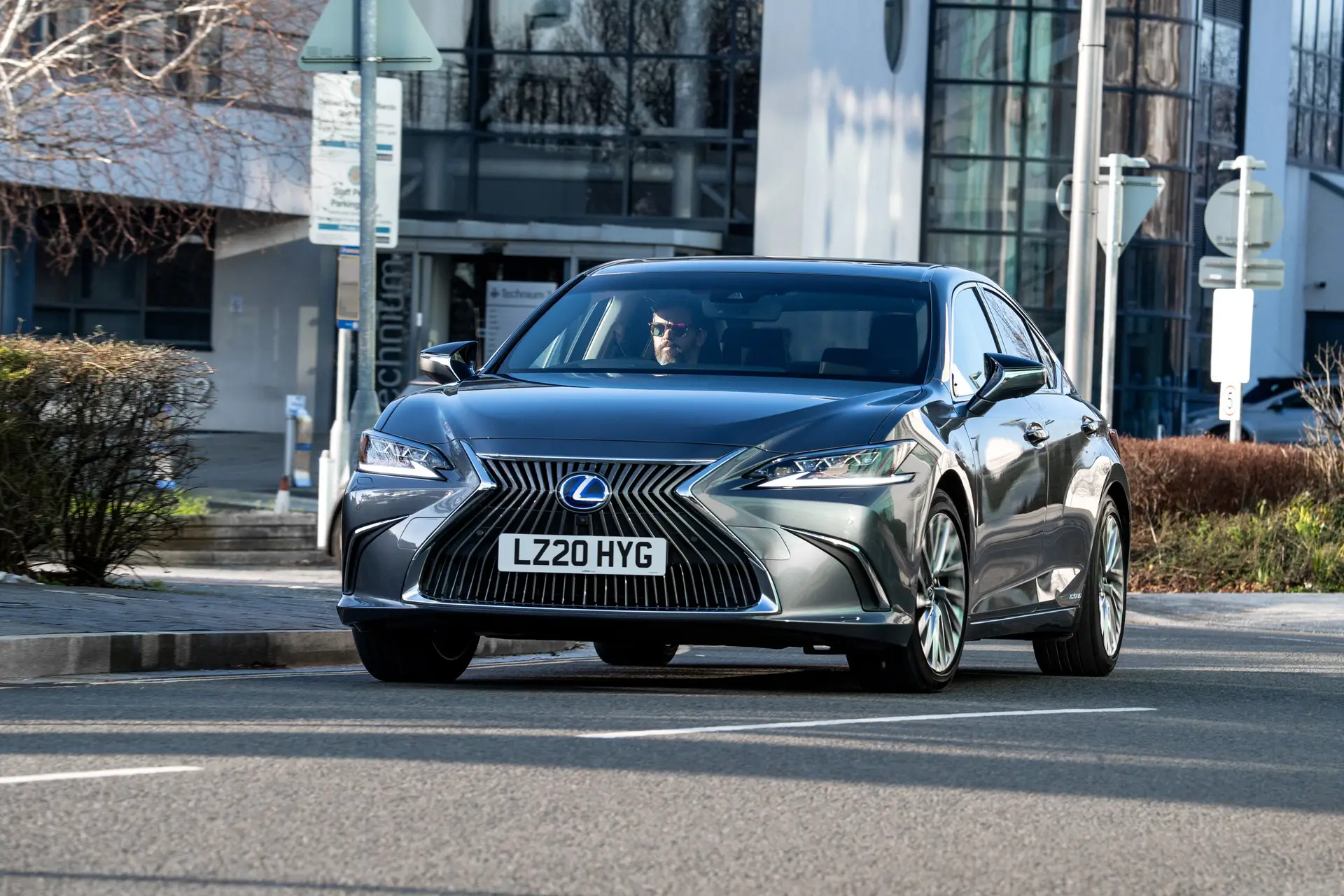
The comfort bias of the Lexus ES is still apparent in 2022, with alterations of the suspension aimed at making it feel a bit more tied down in the bends. While it is perhaps a touch more controlled and responsive, it's still no back-road blaster thanks to the limitations of its front-wheel drive chassis and soft set-up.
With this understood, the ES makes a much more appealing prospect in this class as it does a good job of smoothing out motorway expansion joints and the usual A-road ruffles. It’s not so competent when it comes to urban potholes and dips, where the suspension can judder a little, especially in the F Sport with its 19-inch alloy wheel and lower profile tyres. But its still smoother than some of the sportier options in this class.
The F Sport comes with adaptive dampers for its suspension, which lets you choose between Normal and Sport settings. The Normal mode seems to handle corners fairly well, but the Sport offering doesn’t serve up any appreciably sharper dynamics. There’s a bit more weight to the steering feel in this set-up, but that’s about it and the steering in any ES is not burdened with an abundance of sensation or feedback.
Still, even if the ES is not the be all and end all of driving pleasure, it can be pushed on through bends with confidence as there is plenty of grip. You just have to trust that its there more than sense it as you do in a BMW 5 Series or Jaguar XF, which let you make the most of their available talents much more readily.
On the other hand, the ES is a doddle to park and meanders through town in a thoroughly refined, relaxed manner. The hybrid system plays well to that with its lack of physical gears and low-speed electric-only running making for super-smooth progress.
What engines and gearboxes are available on the Lexus ES?
The Lexus ES comes with one engine and gearbox combo, and that’s your lot. It's a pairing that suits the relaxed, refined driving experience, but not once that offers an abundance of performance or driver enjoyment.
The 2.5-litre four-cylinder non-turbo petrol engine produces 178PS, which combines with an electric motor for a total of 218PS. This is enough to deliver 0-62mph in 8.9 seconds, which is behind the Lexus’s direct rivals.
This sense the ES is short on power next to the competition is realised as you drive more and more. Where you could make easy overtakes in the likes of a BMW 520d or Mercedes E-Class, the Lexus needs more forethought and planning as it just doesn’t have a big enough dollop of mid-rev urge. No matter how hard you press on the accelerator pedal, the ES just always feels a beat behind its rivals - although its hardly slow in isolation.
Pulling away from a standstill, the ES is very smooth, but on the move its responses are dulled by the use of a CVT (continuously variable transmission) rather than the slick eight- or nine-speed automatics commonly found in the competition. You can select a Sport mode and use the steering wheel paddle shifters to give the impression of separate gears and to slightly liven up the ES’s reactions, but it doesn’t make the car any quicker to react in reality.
Prolonged stamping on the throttle only makes the gearbox pin the revs right up near the maximum for sustained periods, which spoils the otherwise excellent refinement with a rather coarse four-cylinder note. So, it’s much better to accept the ES’s limitations and enjoy the smoothness of the hybrid system and the way it will propel the Lexus along a motorway in an unruffled, almost silent manner.
Refinement and noise levels
Lexus has taken the superb refinement of the previous GS model and used it as a springboard to make the ES even more hushed. Where the F Sport model of the GS could suffer from a little rumble created by its 19-inch wheels and tyres, the ES suppresses this much more effectively. There’s still a little noise to be heard, but it’s only really noticeable in comparison to the other ES models.
In both the ES and Takumi models, road noise is all but absent from the cabin, while the 2.5-litre petrol engine is usually a distant hum. Only when you demand the most from acceleration does the engine make itself heard with soaring revs thanks to the quirks of a CVT transmission, and it's not an especially pleasant sound in the context of rivals that can be had with smooth six-cylinder diesels, for example.
Pulling away from a standstill under modest throttle will keep the ES in electric mode for short periods, which helps keep noise down too.
The sleek shape of the ES does a very good job of slicing through the air and keeps buffeting noises on the outside, even at higher motorway speeds. On top of this, all of the controls work with a satisfyingly positive, crafted action that speaks of great refinement.
Safety equipment: How safe is the Lexus ES?
Choose a Lexus ES and you are getting one of the safest cars in its class. It comes with a full five-star safety rating from Euro NCAP, with high scores across the board for adult and child occupant and vulnerable road user protection.
As well as this, every ES comes with autonomous emergency braking, which Lexus calls a Pre-Collision System that detects possible hazards ahead. If the driver doesn’t react, the system performs an emergency stop without the driver’s input.
Lexus also fits every ES with Automatic High Beam to prevent the automatic headlights from dazzling oncoming drivers by adjusting the spread of light. There is also Dynamic Radar Cruise Control to maintain a safe distance to the vehicle in front even as its speed varies, while Lane Tracing Assist keeps the ES between the correct road markings.
All ES models have a tyre pressure monitoring system, as well as road sign recognition to alert the driver of speed limits, and hill start assist. The Takumi model comes with a Blind Spot Monitor and Rear Cross-Traffic Alert and Braking, and both of these are options for the entry-level car. Of course, there's Isofix child seat mounts on the two outer rear chairs on all models.
Maximum EV range of the Lexus ES
Although it’s a petrol-electric hybrid, the Lexus ES doesn’t really have an EV-only range. Yes, you can trickle away from a start on battery power alone and the car will head up to 25mph with no input from the 2.5-litre petrol motor, but you have to be fantastically gentle on the accelerator pedal to keep it in EV mode beyond that.
Even driven in this considerate way, you will cover less than a mile on battery power before the petrol motor comes into play as the ES’s battery pack just isn’t big enough for a more meaningful range. Also, this isn’t a plug-in hybrid, so all of the battery’s energy comes from regeneration as the car coasts or brakes.
MPG and fuel costs: What does a Lexus ES cost to run?
"The Lexus ES delivers diesel-like economy for the most part, and excels in town thanks to its hybrid system."
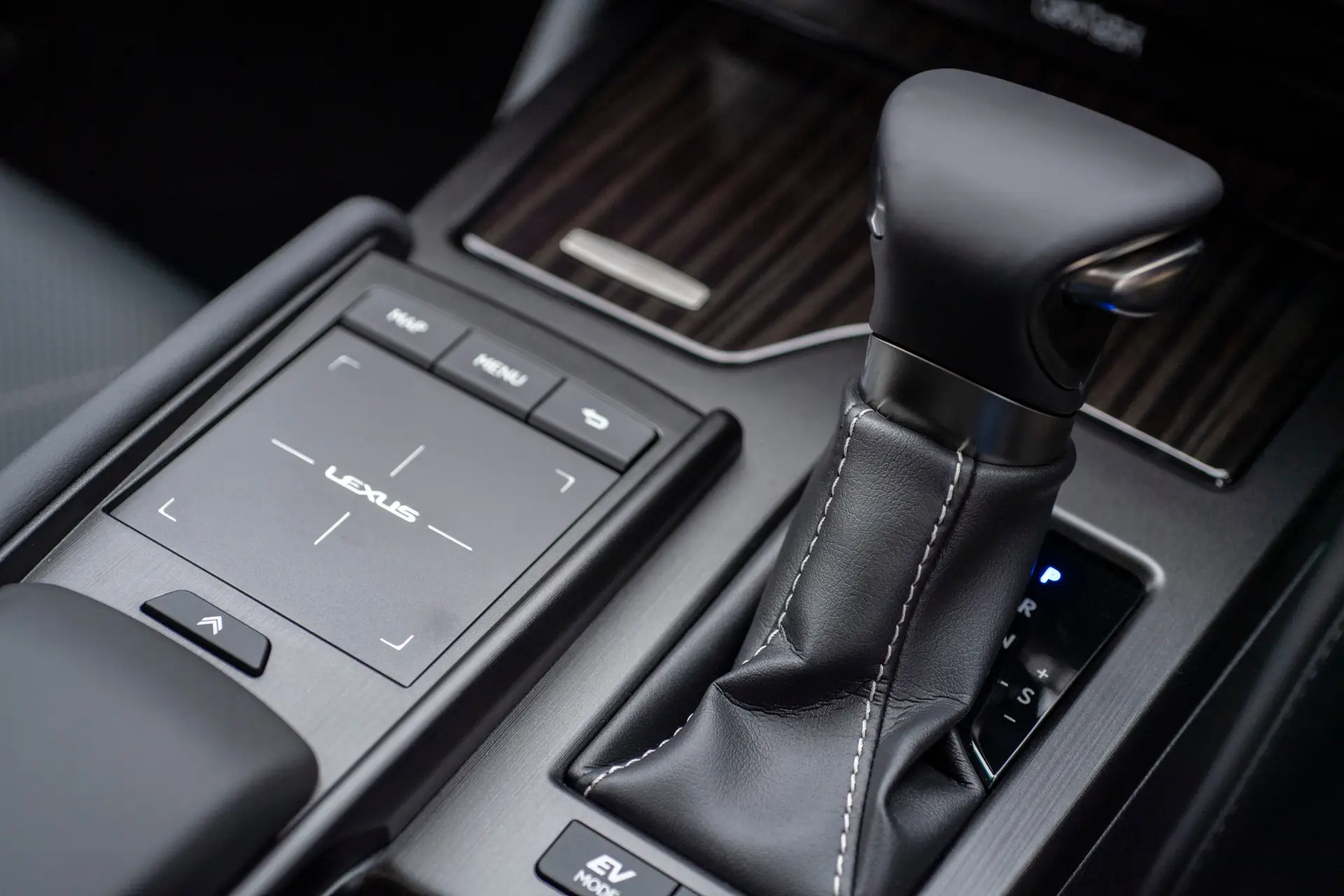
The Lexus ES records a best combined economy of 53.2mpg under WLTP tests, which puts this hybrid saloon on a par with its diesel-fuelled rivals. This is for the ES model, but if you choose the F Sport on its larger 19-inch wheels, the combined figure drops to 48.7mpg.
Looking at Real MPG figures, the ES has notched up an average economy of 55.0mpg, which is impressive in anyone’s books for a car with a 2.5-litre petrol engine.
What's most impressive is that the ES delivers similar economy regardless of the driving situation. Around town, for example, its ability to regenerate energy and put it into the battery in stop-start traffic helps keep you in electric mode, reducing consumption. The trade-off, though, is that a BMW 520d diesel is likely to be better at a constant high speed on motorways.
How reliable is the Lexus ES?
Lexus traditionally excels when it comes to build quality, reliability and longevity. We've no reason to believe the ES won't be just as good as older models, which consistently finish at or near the top of owner satisfaction surveys ahead of more popular German equivalents.
Lexus finished second in the latest HonestJohn.co.uk Satisfaction Index out of all the brands, which itself is a demotion from first in the previous year. If you want an executive saloon that will continue delivering after several years of hard use, the Lexus ES should be a great choice.
Insurance groups and costs
The entry-level ES model is the easiest on your bank balance when it comes to insurance. It sits in group 33, which is much the same as for its natural rivals from other manufacturers.
Choose the F Sport and slips up to a group 34 rating, while the upscale Takumi model jumps up four notches to sit in group 38 and be the most expensive when it comes to arranging cover and your premium.
VED car tax: What is the annual road tax on a Lexus ES?
For the first year’s road tax, the Lexus ES model will pay £150 in tax thanks to its 100g/km carbon dioxide emissions. Should you choose the F Sport or Takumi, they emit 103g/km and you will have to pay £170, which is hardly a deal-breaker. That then defaults to £165 a year for every model after the first year.
However, this being an executive model, you can get stung with the 'Premium car tax' which puts a levy on non zero-emission vehicles with a list price of over £40,000. This adds an extra £355 a year for five years to the standard road tax rate. It's worth noting that this doesn't apply to the entry-level ES or the Premium Edition, both of which have a list price just under £40,000.
How much should you be paying for a used Lexus ES?
"New prices for the Lexus ES start at under £40,000, but you'll save a chunk of money by shopping for nearly new deals at heycar"
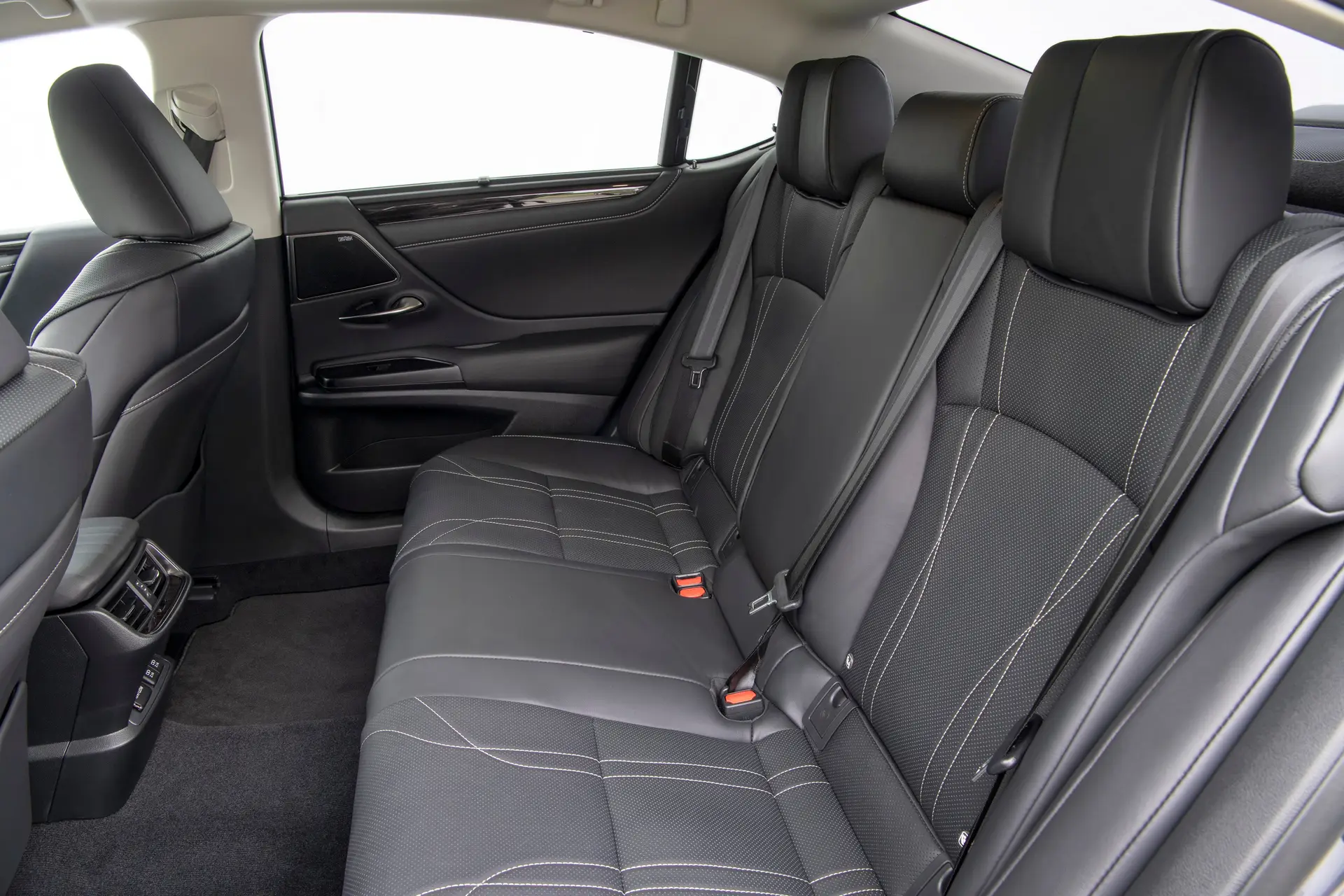
New prices for the Lexus ES range from around £38,500 to over £52,000. That's nowhere near as great a range of prices as German rivals, but bear in mind you only get one engine option with the ES.
Used prices start from around £27,000 for a 2019 ES with 30,000 miles on the clock. Lexus models do tend to hold their value pretty well due to their reputation for reliability, and they're in relatively short supply on the used market.
Trim levels and standard equipment
Lexus starts the ES 300h range with the eponymously named ES. It has 17-inch alloy wheels, reversing camera and the Lexus Safety System Plus that includes radar cruise control, lane departure warning and High Beam Assist. On the inside, you get an 8-inch infotainment screen that works with Apple CarPlay and Android Auto, sunroof, and electric front seat adjustment. There’s also man-made leather upholstery, heated front seats and steering wheel, electrically adjusted steering column, climate control, rear privacy glass and Lexus Connected Services for internet access.
Many ES buyers will upgrade with the Premium Pack that brings full leather trim, wireless phone charger, rain-sensing wipers, ventilated front seats with powered lumbar support, rear screen sun shade and Blind Spot Monitor. As of 2022 this also includes the upgraded 1.2-inch touchscreen with navigation, and the Safety System+ pack.
The F Sport has 19-inch alloys, sporty body kit, and Adaptive Variable Suspension with Sport S+ Driving Mode. There are front sports seats with a memory function for the driver’s chair, steering wheel paddle shifters, and aluminium pedals and dash trim inserts.
With the Takumi, you get 18-inch wheels, LED headlights with High Beam Assist, and a 360-degree Panoramic View for easier parking. The seats are trimmed in plush leather and have a greater range of electric adjustment, while the steering wheel is covered in wood and heated. Wood is also used for the trim inserts, and you get a head-up display, wireless phone charging and 17-speaker Mark Levinson Premium Surround Sound stereo.
Ask the heycar experts: common questions
Is the Lexus ES a good car?
What does ES stand for with the Lexus ES?
Is the Lexus ES the same as a Toyota Camry?
Stay up to speed with great offers plus the latest car news and reviews
Keep me updated by email with the latest advice, news and offers from heycar.
By submitting you agree to our privacy policy


